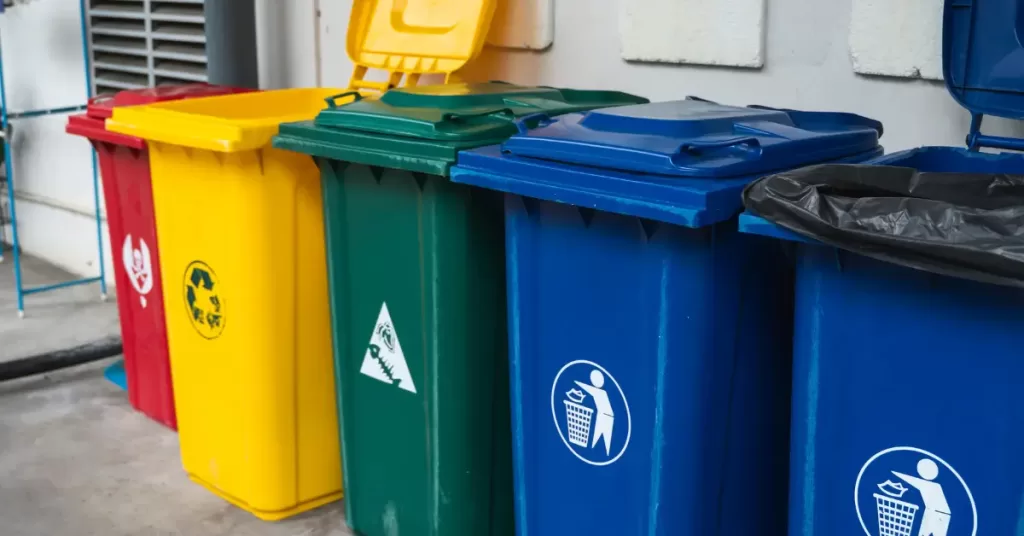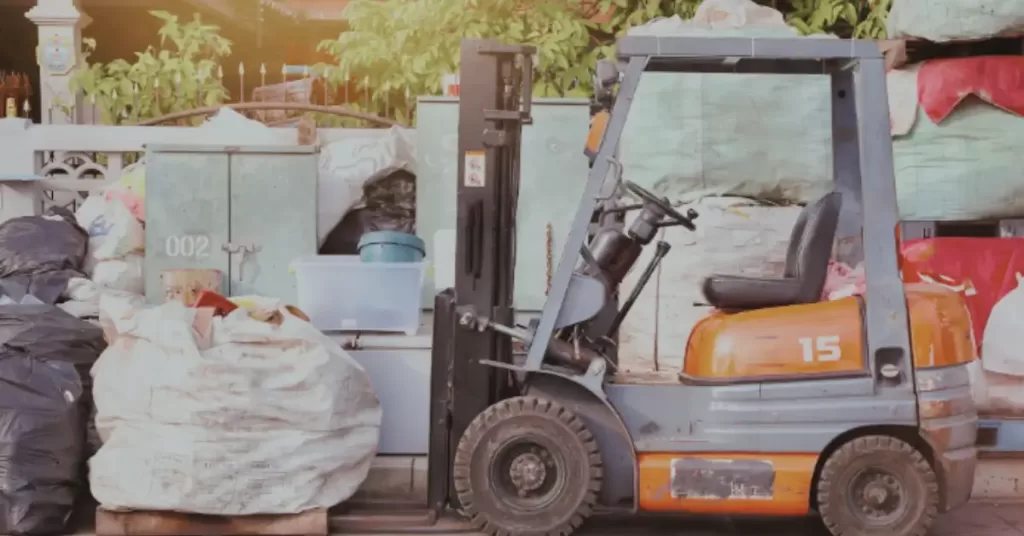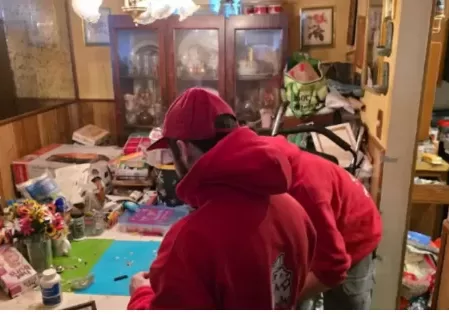How Do You Cut a Mattress for Disposal? A Simple Guide
So, you’re stuck with a clunky old memory foam mattress that’s seen better days. Maybe it’s sagging, maybe it’s got mysterious lumps, or perhaps it’s become a glorified trampoline for your pets. Either way, getting rid of it feels like planning a small heist—because full-size mattresses don’t exactly fit in the back of a previous one.
But cutting up a spring mattress for proper disposal? That’s the golden ticket! Whether you’re dealing with local waste restrictions, a lack of space in the dumpster, or a need to flex your DIY muscles, chopping it down makes disposal (and recycling!) way easier.
Before you go full “DIY ninja” on it, though, let’s cover the basics—safety, tools, and the game plan. Follow this simple, step-by-step guide, and you’ll have that mattress reduced to manageable pieces in no time.
Things to Know Before Cutting a Mattress for Disposal
Before you start hacking away like it’s a scene from a horror flick, you’ll need some key info to stay safe and organized.
Cutting a mattress may be necessary and helps when:
- Local garbage services won’t take whole mattresses.
- The mattress is too big to transport.
- You want to separate the parts for recycling or scrap.
Check Local Disposal Regulations
Call your local waste management services or check their website. Some areas require special disposal steps, like mattress recycling programs or scheduled pickups.
Safety Precautions to Take
You’re working with sharp tools and springs for disassembly, so safety is necessary.
- Gloves: Thick, work-safe gloves keep those hands scratch-free.
- Goggles: Springs can snap, so protect those eyes.
- Dust Mask: Foam and fabric can release dust and small particles, so wearing a mask helps protect your lungs.
- Ventilated space: Foam can release dust and odors. A garage, backyard, or open area is ideal.
Tools You’ll Need
Think of this as your mattress demolition toolkit.
- Utility knife or Seam ripper: For slicing through fabric and foam.
- Wire cutters or pliers: To dismantle those pesky springs.
- Handsaw: For cutting the wooden frame. Bonus points for using a power saw, or a reciprocating saw if you want to feel fancy.
- Garbage bags: These are used to neatly bag the foam and fabric scraps.
- Duct tape: For bundling materials if needed.
Step-by-Step Guide on How to Cut a Mattress for Disposal
Ready to get your hands dirty (but not literally, thanks to gloves)? Here’s the breakdown, step by step on how to cut a mattress for disposal;
Step 1: Remove the Mattress Cover
- Start by stripping off any sheets, mattress pads, or covers. Now grab your trusty utility knife.
- Slice along the edges where the fabric meets the seams. Peel it back like you’re unwrapping a surprise—a surprisingly old mattress, that is.
Pro Tip: If the cover’s still clean, consider reusing it for DIY projects or donating it for recyclable fabric.
Step 2: Cut Through the Top Foam Layer
- Underneath the cover, you’ll find the foam layer. Use a sharp knife to slice it into smaller, manageable chunks.
- Foam can be dense, so cut in controlled motions. Avoid pressing too hard—you don’t want to slice through tools or, worse, yourself.
Fun Fact: Some foam can be reused for cushioning DIY projects, like dog beds or seat padding. Get crafty!
Step 3: Dismantle the Springs or Inner Coils
- Springs? They’re like the skeleton of your puffy mattress—strong, stubborn, and a little sharp.
- Use pliers or wire cutters to snip through the coils. If springs won’t budge, twist them apart (carefully!) like you’re opening a jar of pickles.
Safety Tip: Springs can snap. Gloves and goggles are not optional here.
Once freed, collect the springs. Many scrap metal yards will take them for recycling, and hey, maybe you’ll make a few bucks!
Step 4: Break Down the Wooden or Base Frame
- If your mattress has wooden slats or a frame, it’s time to bring in the big guns: a handsaw or electric saw.
- Saw through the wood carefully, cutting it into smaller pieces for easy transport.
Eco Tip: Wooden pieces can often be composted or repurposed. Think garden stakes or DIY firewood.
Step 5: Bag and Prepare Materials for Disposal
Now that your mattress is in pieces, sort and bag the materials.
- Foam: Garbage bags.
- Springs: Separate for scrap metal.
- Wood: Tie into bundles or place neatly for pickup.
Keeping the materials organized makes disposal—and recycling—a breeze. Plus, it earns you eco-friendly brownie points.
Tips for Cutting a Mattress Safely and Efficiently
Want to make the process smoother and stress-free? Here’s how:
Use the Right Tools
Sharp, sturdy cutting tools are your best friend. Dull tools make the job harder and risk injuries. Treat yourself to a good utility knife and pliers.
Work in a Clear, Ventilated Space
Avoid tight spaces or rooms filled with valuables—nobody wants foam dust on their sofa. Garages, driveways, or backyards are ideal.
Plan for Recycling or Disposal Ahead
Have a plan for each tool needed before starting. Know where you’ll drop off the foam, springs, and wood so you’re not left with a pile of parts you don’t know what to do with.
Where to Dispose of Mattress Parts After Cutting

Okay, you’ve done the hard part—slicing, dicing, and turning your mattress into manageable pieces. Now what? Time to send those parts to the right place where they can be disposed of or recycled responsibly. Here’s how to ensure every piece finds its new home (and not a landfill).
- Recycling Centers
Recycling centers are your eco-friendly MVPs when it comes to mattress disposal. Most centers accept materials like:
- Foam: Many recycling programs repurpose foam into carpet padding, insulation, or even cushioning for furniture. It’s lightweight and often easy to break down, making it a perfect candidate for recycling.
- Metal Springs: Springs and coils can be melted down and reused for manufacturing new metal products, from bicycles to construction materials.
- Wood: If your mattress has a wooden base or slats, these can often be recycled or even chipped into mulch for landscaping.
What to do:
- Use websites like spartanjunk.com or local city government portals to find recycling centers near you. Just type in your ZIP code and the type of material (e.g., foam, metal, wood) to find the right drop-off spots.
- Call ahead to confirm the materials they accept and any fees or guidelines.
Pro Tip: Some recycling centers even offer pickup services for bulk items like mattresses, saving you an extra trip.
- Scrap Metal Facilities
Springs and coils in your mattress? Don’t toss them—cash them in! Scrap metal yards love metal components because they’re easy to repurpose, and you might even get a few bucks for your trouble.
Here’s what to do:
- Use wire cutters or pliers to separate the springs from the foam and fabric. This ensures the springs are clean and ready for recycling.
- Collect all the springs and coils in one place to make transport easy.
- Find a local scrap yard or metal recycling facility in your area (a quick Google search for “scrap metal recycling near me” does the trick).
Why bother?
- Recycling metal is much better for the environment than leaving it to rust in a landfill. Plus, it reduces the need for raw material extraction.
- Getting paid for old mattress parts? That’s what we call a “win-win.”
Extra Tip: Some scrap facilities weigh your metal and pay by the pound. It’s not exactly a fortune, but hey, it might cover your coffee for the day.
- Local Waste Management Services
Sometimes the simplest solution is just to call your city’s waste management services and ask about their guidelines for mattress disposal. Many municipalities have specific processes for large, bulky items like mattresses.
What to check for:
- Bulk Pickup Programs: Some cities allow residents to schedule bulk waste pickups, especially for dismantled mattress parts. You’ll need to bag and bundle each material (foam, metal, wood) according to their rules.
- Drop-off Locations: Waste facilities may have designated drop-off days for bulky items.
- Fees: Some cities charge small fees for large item pickups or drop-offs, so clarify this ahead of time.
How to prepare:
- Bag all foam and fabric scraps neatly in durable garbage bags.
- Bundle wooden pieces securely to make handling easy.
- Place metal parts like springs in a separate bag or container.
Quick Tip: If you don’t have a scheduled waste pickup in your area, consider renting a small dumpster for bulk disposal. It’s worth it when you have a lot of material to clear out.
- Donation Centers
Not all parts of your mattress need to hit the recycling plant—some can still be put to good use. Donation centers, shelters, or animal rescues often welcome clean, reusable materials like:
- Foam: Animal shelters love foam for creating makeshift dog beds or animal play areas.
- Fabric: If the mattress fabric is in good condition, it can be reused for sewing projects, upholstery, or crafting.
- Wood Slats: Wooden parts might find new life in DIY furniture projects or shelter repairs.
How to donate:
- Call local animal shelters, thrift stores, or community organizations ahead of time. Policies for accepting materials vary, so it’s best to confirm what they need.
- Make sure the materials are clean and free of mold, stains, or odors. No one wants mystery foam.
Why donate?
It’s an easy way to give back to the community while keeping reusable materials out of landfills. Plus, you get to feel like a hero—and that’s always a bonus.
Keep in mind: Before you even pick up a utility knife, have a clear disposal plan for each part of the mattress. Whether it’s recycling, scrap metal yards, or donations, knowing where each piece will go saves you stress and cleanup time later.
So, get slicing, get organized, and feel good knowing your old mattress parts are off to greener pastures—or at least not clogging up a landfill!
Alternatives to Cutting a Mattress for Disposal
Not feeling the DIY life? No problem—there are other options:
1. Hire a Professional Junk Removal Service
Junk removal companies can haul away your mattress, saving you time, energy, and a mess. Plus, many services prioritize eco-friendly disposal.
2. Donate the Mattress if It’s Still Usable
Organizations like thrift stores, shelters, or furniture banks may accept gently used mattresses. Call ahead to confirm the requirements with your local organization.
3. Mattress Recycling Programs
Some companies and nonprofits specialize in recycling entire 20 million mattresses. Look for services like Spartan Junk Removal or call a junk removal company to find options for you.
Master Mattress Disposal: Next Steps for a Greener Cleanup

And there you have it—your foolproof guide to cutting a mattress includes disposing. Whether you’re upcycling the foam, scrapping the springs, or sawing up the frame, you’ve conquered mattress disposal like a pro.
To recap, cutting a mattress using a utility knife is practical for tricky disposal situations. For safety measures, wear gloves, and goggles, and use the right tools. Dispose of or recycle parts responsibly for a greener planet.
If cutting seems daunting as a hands-on project, there are always pros who can handle the heavy lifting. Either way, you’re making space for something better—whether that’s a shiny new mattress or just room to stretch your legs.
Now go on—make that mattress disappear with Spartan Junk Removal, and don’t forget to recycle like the earth-loving hero you are!
Frequently Ask Questions About Cutting a Mattress
Is It Legal To Cut Up a Mattress for Disposal?
Yes, cutting up a mattress for disposal is legal as long as you adhere to the rules and regulations of your local recycling center or waste disposal facilities. Always check with your city or municipality beforehand to ensure compliance with their guidelines.
Some areas may have specific requirements for disposing of mattress components like foam, springs, or fabric, so it’s best to confirm before starting.
What Tools Do I Need To Cut a Mattress?
To safely and effectively cut up a mattress, you’ll need a utility knife to cut through the fabric and foam layers, pliers and wire cutters to handle the springs, and a handsaw for the wooden frame (if present).
Additionally, sturdy garbage bags are essential for neatly containing and disposing of the materials. Make sure you also wear gloves and safety goggles to protect yourself during the process.
Can I Recycle Mattress Parts?
Absolutely! Many mattress components are recyclable. Metal springs can be taken to scrap yards, where they can be melted down and reused. Wooden parts, like frames, can be repurposed or recycled for DIY projects. Foam materials can often be donated to recycling centers that specialize in cushioning or upholstery.
Check with local facilities to see what parts they accept and how they should be prepared for recycling.
How Long Does It Take To Cut Up a Mattress?
The time it takes to cut up a mattress can vary depending on its size and construction, as well as your familiarity with the process. However, with the right tools and a bit of preparation, it typically takes about 30–60 minutes.
Make sure to work on a sturdy surface and allocate enough time to safely dismantle and separate the components for disposal or recycling.






